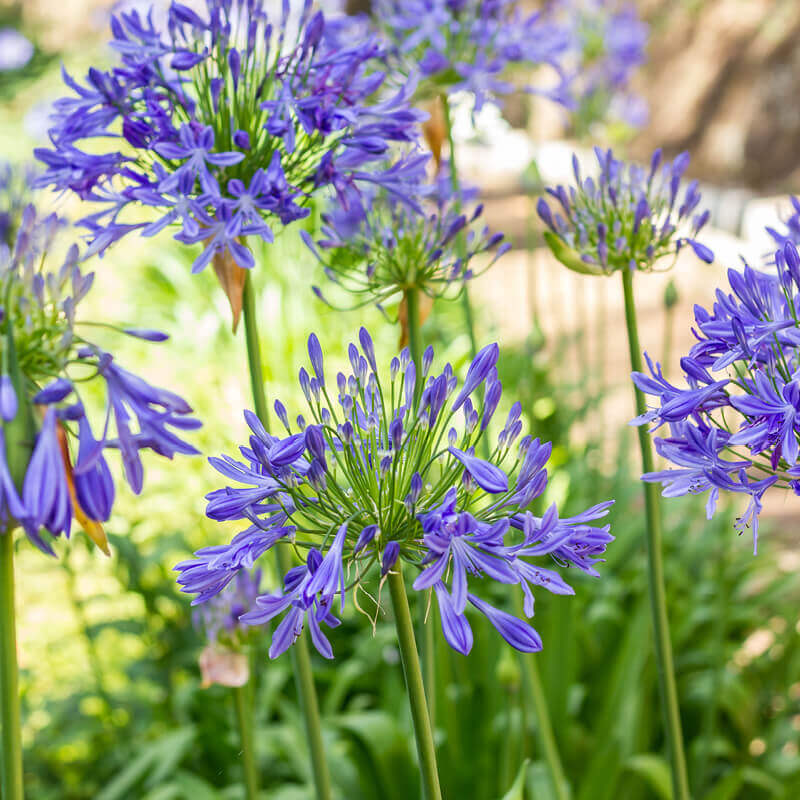Agapanthus Varieties: Selecting the most effective for Your Landscape
Agapanthus Varieties: Selecting the most effective for Your Landscape
Blog Article
Mastering the Art of Agapanthus Care: Vital Actions for Healthy Growth and Lively Flowers
In the world of cultivation, the cultivation of agapanthus stands as a fulfilling undertaking for those that seek to support these sophisticated flowering plants. From choosing the right range to grasping trimming methods, the journey towards cultivating growing agapanthus plants is complex and holds the key to unlocking the complete possibility of these agricultural gems.

Selecting the Right Agapanthus Range

When choosing the ideal Agapanthus variety for your garden, consider variables such as environment suitability, flower color, and development behavior. Additionally, consider the environment in your region to guarantee the Agapanthus variety you select can grow in your particular problems. Understanding the development practice of various Agapanthus ranges is vital for appropriate positioning within your garden.
Perfect Growing Problems
Taking into consideration the ideal ecological requirements is essential for successful Agapanthus growing. Agapanthus thrives in well-draining soil with a somewhat acidic to neutral pH degree. When growing, choose a location that receives full sunshine to partial color. In hotter climates, supplying some mid-day shade can stop scorching of the fallen leaves. Agapanthus plants are delicate to cold temperatures and must be safeguarded from frost during cold weather.
To make sure healthy and balanced development and lively blooms, plant Agapanthus bulbs at a deepness of concerning 2-4 inches and area them 8-12 inches apart. Mulching around the base of the plants helps retain moisture and subdues weed development.
Watering and Fertilizing Tips
Maintaining proper wetness levels and providing essential nutrients are crucial elements in the care routine for Agapanthus plants. It is crucial to strike an equilibrium when it comes to sprinkling Agapanthus. If overwatered, these plants prefer constantly damp dirt but are vulnerable to root rot. During the expanding season, water deeply as soon as a week, making certain the soil is well-draining to avoid waterlogging. In hotter environments or throughout durations of drought, more constant watering may be necessary to maintain the soil equally moist. Nonetheless, decrease watering in the winter months to avoid water logged conditions.
Feeding Agapanthus is essential for promoting healthy growth and respected blooms. Apply a well balanced plant food, such as a 10-10-10 formula, in the early spring as new growth emerges. By complying with these watering and fertilizing ideas, you can ensure your Agapanthus plants prosper and create lively, resilient blossoms.
Trimming Methods for Agapanthus
Trimming Agapanthus plants at the suitable times and with appropriate methods is important for keeping their health and wellness and promoting optimal development and flowering. The perfect time to trim Agapanthus remains in late winter season or early spring prior to brand-new growth arises. Start by his explanation eliminating any type of dead or yellowing leaves near the base of the plant. Cut them as short as possible without damaging the arising shoots.
For flowered stems, wait till the flowers have actually perished and then trim them back to the base. This not just cleans up the plant's look however also urges the advancement of brand-new flower buds. Deadheading invested flowers can likewise redirect the plant's energy into generating more blossoms as opposed to establishing seeds. Nevertheless, if you desire to accumulate seeds for proliferation, leave some blossoms to mature and completely dry on the plant.
Remember to utilize check out this site tidy, sharp tools to make exact cuts and reduce the danger of presenting diseases. Agapanthus. Normal trimming will certainly help keep your Agapanthus looking cool and healthy while making certain a bountiful screen of beautiful flowers
Managing Common Insects and Conditions
After guaranteeing correct trimming techniques for Agapanthus, it is important to deal with usual parasites and diseases that can impact the health and wellness and vitality of these plants. Agapanthus plants are normally sturdy yet can still succumb specific concerns. One usual parasite that affects Agapanthus is the Agapanthus gall midget. This tiny, orange fly lays its eggs in the foliage, bring about altered development and blossom buds that fail to open up. To combat this pest, trim and destroy any affected plant parts and take into consideration making use of insecticidal soap.
Another usual concern is fungal fallen leave area, which presents as dark lesions on the leaves. To stop fungal illness, make certain great air blood circulation around the plants, stay clear of overhanging watering, and remove any infected fallen leaves immediately. Furthermore, Agapanthus plants can endure from origin rot if they are planted in badly draining pipes soil. To avoid this, plant Agapanthus in well-draining soil and stay clear of overwatering. By being cautious and taking prompt action versus conditions and parasites, you can aid your Agapanthus web link plants prosper and produce vibrant blossoms.

Final Thought
Finally, understanding the art of agapanthus treatment entails picking the right variety, offering suitable growing conditions, proper watering and fertilizing, proper trimming techniques, and attending to typical insects and conditions. By complying with these necessary actions, you can make sure healthy and balanced growth and vivid blossoms for your agapanthus plants. Bear in mind to consistently monitor and maintain your plants to advertise their total health and long life.
To make sure healthy and balanced development and lively flowers, plant Agapanthus bulbs at a deepness of regarding 2-4 inches and area them 8-12 inches apart. By following these watering and feeding pointers, you can ensure your Agapanthus plants thrive and produce lively, resilient blossoms.
One usual parasite that impacts Agapanthus is the Agapanthus gall midge. In addition, Agapanthus plants can experience from origin rot if they are grown in inadequately draining soil. By following these important actions, you can guarantee healthy and balanced growth and lively flowers for your agapanthus plants.
Report this page